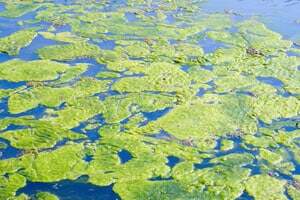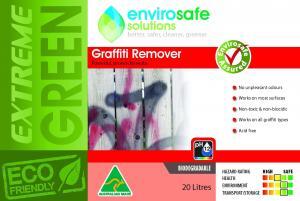Scientists have discovered innovative uses for the mountains of mining waste produced in Western Australia. CSIRO research has identified mining by-products as a rich source of minerals capable of filtering phosphorous and nitrogen – common in detergents and fertilisers – from river systems. Removing these nutrients would reduce the risk of toxic algal blooms and help mining companies join the green revolution.
In November of 1991 Australia experienced the largest recorded toxic river algal bloom in history. It turned a 1000km stretch of New South Wales Barwon and Darling rivers into what was described as a ribbon of ‘pea soup’ and resulted in a state of emergency being declared.
The threat to livestock and residents led to emergency water-filtration equipment being installed to provide drinkable water. Blue-green algae (more correctly referred to as cyanobacteria) can produce dangerous and even fatal toxins – causing vomiting, diarrhoea or death. It also strips oxygen from water killing fish and other aquatic life.
Research into mining by-products has found iron oxides, aluminium oxides, calcium and magnesium in mining waste can effectively filter, absorb or neutralise a range of nutrients in water sources.
Algae flourish in Australian conditions
High levels of the nutrients phosphorous and nitrogen, combined with warm weather and low water flows, create perfect conditions for the spread of blue-green algae. These nutrients build up in waterways from stormwater run-off from factories, farms, gardens and parks.
River bank erosion has also been found to increase nutrient levels.
Common sources of phosphorous and nitrogen include fertilisers and household detergents such as laundry powder (Australian supermarkets are currently phasing out phosphate-based laundry powder in favour of environmental cleaning products). In fact, the use of eco-friendly industrial liquids has a significant role to play in reducing soil and water contamination.
Filtering out nutrients
CSIRO scientist Grant Douglas said introducing this mining waste into waterways was not as simple as pouring it into a river from the back of a truck. It must be carefully introduced into soils. Diverting water through wetlands enriched with mining by-products could filter nutrients and reduce the risk of algal blooms.
He said while the research had been conducted in Western Australia it would be applicable to mining waste produced in other states or countries.
“A few years ago we looked at Western Australia and decided, well, WA is a large mining state and we’ve produced many millions of tonnes of by-products (and few) had ever really been looked at closely and certainly not with a view to possible reuses in environmental amendments.”
Choosing environmental cleaning products
The role of chemical compounds on water and soil quality has increasingly been recognised by industrial operators, who are turning to eco-friendly industrial liquids to replace traditional cleaners.
Perth-based Envirosafe Solutions provides a comprehensive range of environmental cleaning products to the mining and industrial sectors. Its water-based Extreme Green Solvent-Free Degreaser provides a powerful, economical solution to grease on surfaces and engines. This biodegradable cleaner is so safe it can be used on everything from auto workshops to commercial kitchens.
Reducing the use of solvents and phosphates by selecting environmental cleaning products helps prevent waterways from becoming a perfect breeding ground for blue-green algae. For advice on Envirosafe Solutions products phone 1300 88 90 70 or email info@evss.com.au.
Sources:




















